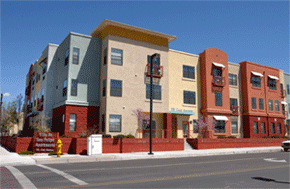Adopting State Legislation to Promote Affordable Housing in New Mexico
As is the case with the majority of the country, the state of New Mexico is experiencing an economic downturn that negatively affects the housing industry. However, despite the weakening real estate market, the 2008 New Mexico State of Housing Report projects a population growth of 2.6 million people by 2030, adding to housing challenges that the state breaks down into three categories: affordability, availability, and sustainability. In this article, we will focus on legislation in New Mexico that seeks to address housing affordability challenges.
The Affordable Housing Act

The Mortgage Finance Authority (MFA) has long served as New Mexico's designated housing agency, administering all state and federal housing programs such as Section 8 housing, low-interest mortgage loans, and downpayment assistance. More recently, the agency has also pursued other strategies to increase affordable housing development. In 2004, the MFA worked with state legislators to design and pass the Affordable Housing Act — legislation that exempts affordable housing from the state's antidonation clause. Prior to the Act, no state, county, or local government agency was permitted to make donations to any person, association, or public or private corporation. The Act modifies the state constitution by allowing government agencies and school districts to increase affordable housing opportunities in their own communities by donating, providing, or paying for the following costs or services:
• Land for the construction of affordable housing;
• Converting or renovating existing buildings into affordable housing;
• Financing or providing infrastructure to support affordable housing projects; and
• Acquiring, developing, constructing, financing, operating, or owning affordable housing.
To take advantage of the initiative, the county or municipality must first provide the MFA with a housing plan or housing element that analyzes local housing needs and must also enact an ordinance for each affordable housing project or program. To date, over a dozen communities have drafted ordinances addressing the need to provide housing for low- to moderate-income households.
Housing Trust Fund & Tax Credit
Building on the successful implementation of the Act, the state adopted the New Mexico Housing Trust Fund (HTF) in 2005. The trust fund allows the state to finance loans or grants for projects that will increase affordable housing opportunities for persons or families of low or moderate incomes. Funds are awarded to any qualifying for-profit or nonprofit organization on a competitive basis; applications are reviewed by the HTF's nine-member advisory committee to ensure that applicants develop housing solutions that are responsive to local needs and are consistent with sound housing policy. The MFA has awarded over $12 million in trust fund money, leveraging an additional $180 million in other housing funding. The entire program is expected to result in more than 1,000 affordable housing units throughout the state.
Another promising initiative, also adopted in 2005, is the New Mexico Affordable Housing Tax Credit. The tax credit provides a voucher (valued at 50 percent of the total investment) to individuals and organizations that have donated land, constructed residential buildings, contributed cash, or provided other services that resulted in either new or rehabilitated affordable housing. The voucher holder may sell, exchange, or transfer the tax credit to other persons or it may be applied against the credit holder's personal or corporate income tax liabilities. The MFA has allocated over $700,000 in state affordable housing tax credits, reflecting total donations valued at over $1.4 million to develop new housing projects throughout the state.
Conclusion
New Mexico's housing challenges are compelling state legislators to devise strategies that encourage communities to adopt forward-thinking housing programs. Since the enactment of the aforementioned legislation, the state has drawn much needed attention to the housing affordability issue that has long been ignored. In taking steps toward expanding the availability of housing funds, the state will persevere in reducing the number of residents burdened by housing costs.
Previous Article Search Archives
|

